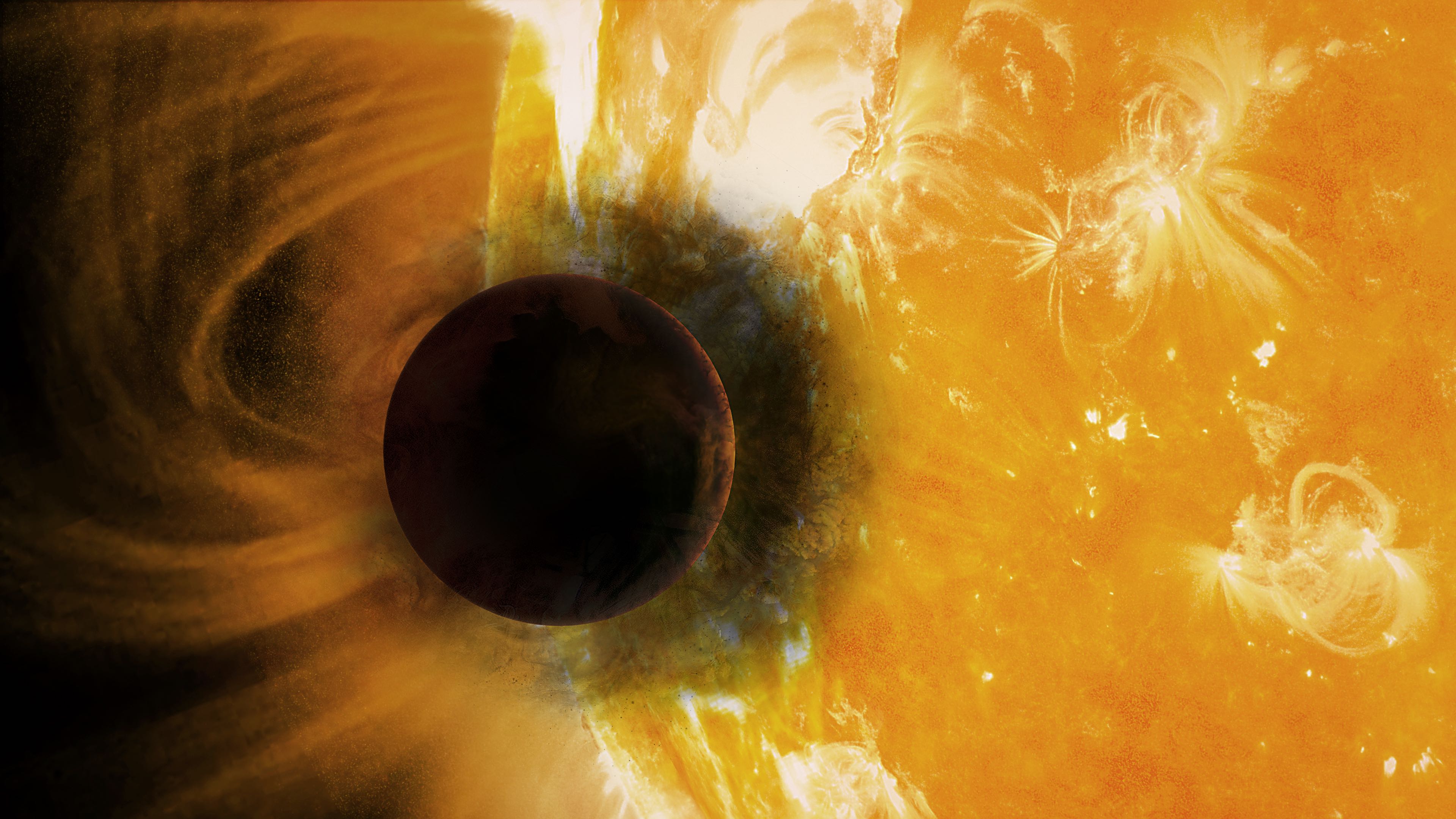First detection of Helium in an exoatmosphere

For the first time, an international team of astronomers including members of PlanetS has detected helium in an exoplanet’s atmosphere. Early theoretical models predicted helium to be among the most readily-detectable species in the atmospheres of exoplanets, especially in extended and escaping atmospheres. However, searches for helium have been unsuccessful until now.
By measuring the near-infrared transmission spectrum of the warm gas giant WASP-107b with the Hubble Space Telescope, the astronomers identified the narrow absorption feature of excited, metastable helium at 10833 angstroms. WASP-107b orbits its star in 5.7 days and is one of the planets with the lowest density known, with a radius similar to that of Jupiter (0.94±0.02Rj) and a much lower mass (0.12±0.01Mj). « The large absorption signal suggests that WASP-107b has an extended atmosphere and may have a comet-like tail of gas shaped by radiation pressure » explains Vincent Bourrier member of PlanetS and co-author of the article. According to this study WASP-107b is eroding at a total rate 0.1-4% of its total mass per Gyr.
Atmospheric mass-loss can substantially alter the bulk composition of a planet. For example,
there is evidence that atmospheric escape is responsible for the observed deficit of highly
irradiated super-Earth and sub-Neptune exoplanets with sizes between 1.6 and 2 Earth radii. In order to calibrate theories of planet formation, and assess whether these planets have
substantial H/He envelopes, it is necessary to understand how atmospheric mass-loss affects
the subsequent evolution of bodies that start with significant atmospheres.
Observations of WASP-107b in the 10,833Å line provide not only the first detection of
helium in an exoplanet, but also the first detection of an extended exoplanet atmosphere at
infrared wavelengths. This result demonstrates a new method to study extended atmospheres
which is complementary to ultraviolet observations in the neutral hydrogen line.
https://www.nature.com/articles/s41586-018-0067-5
https://www.nature.com/articles/d41586-018-05052-w

Wasp 107b in front of its star. Artist view (credit: U. Exeter / EngineHouseVFX)

